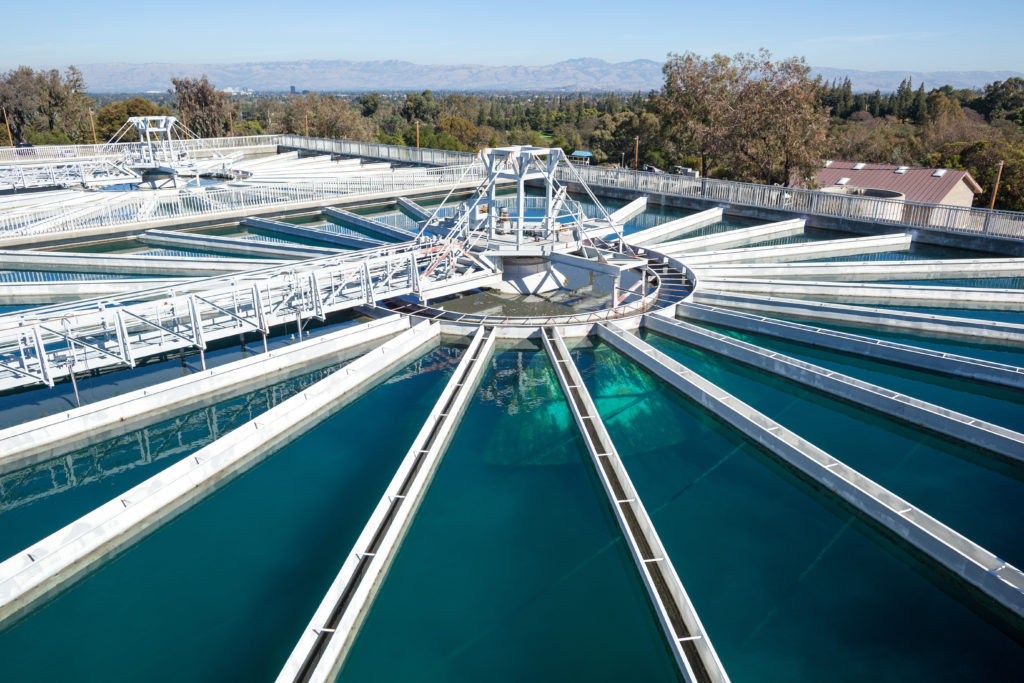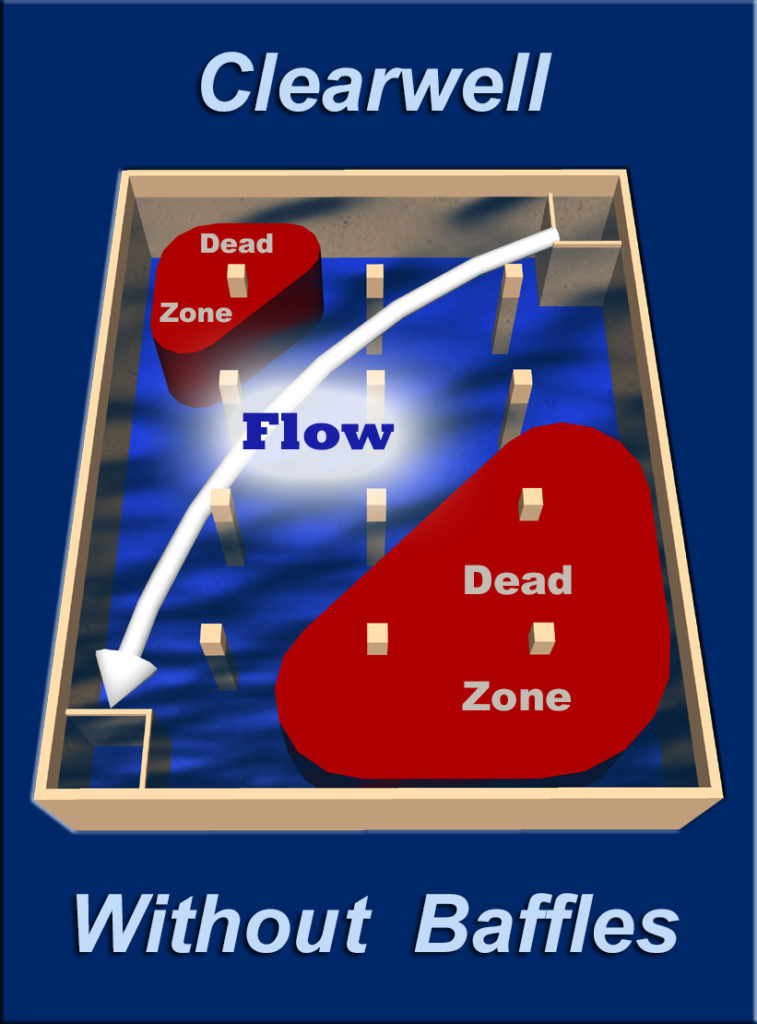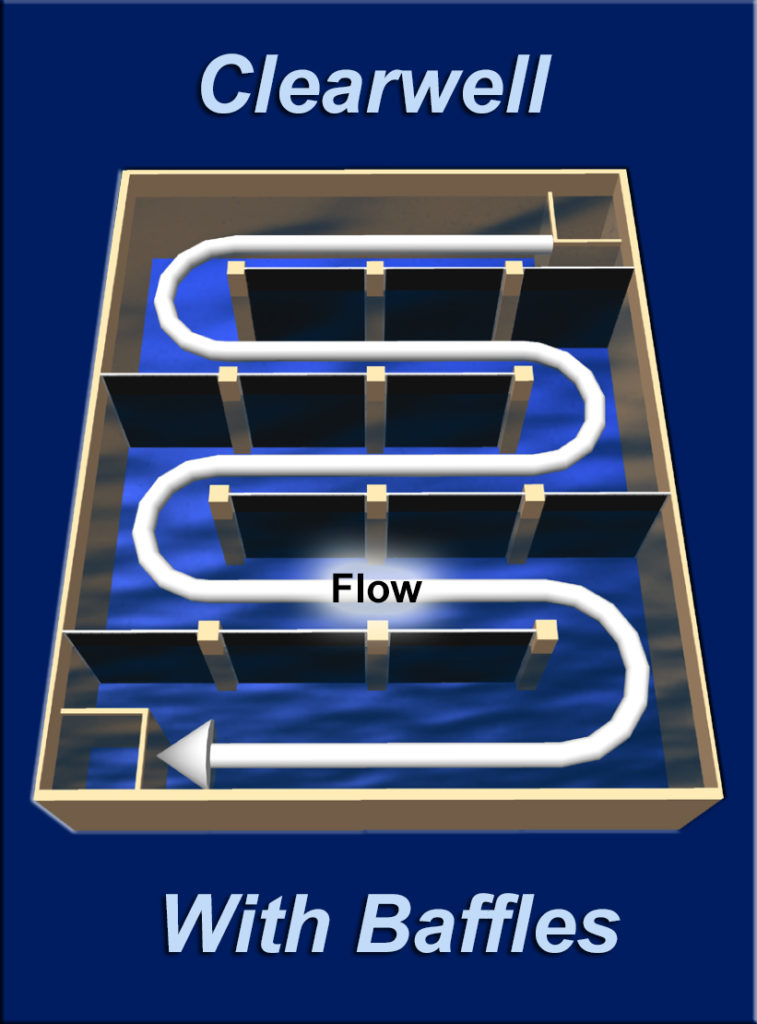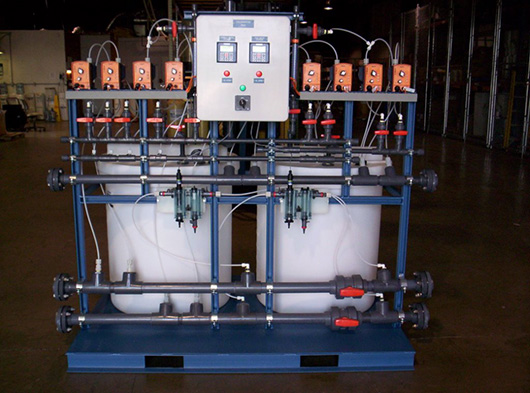Detention time is the length of time that water or suspended material is retained in a tank or channel, or, the length of time from when water enters a settling basin until it flows out the other end. It can also be thought of as the amount of time it takes to fill an empty tank or vessel.

Detention time is an important concept to understand because it is used in many different water treatment processes. It is used during the processes of mixing, coagulation/flocculation, and sedimentation.
Just a Theoretical Value
When calculating detention time, the values you receive will only be theoretical. That is because it is impossible to determine the exact time that any one drop of water will flow through a tank or basin. For most situations, these theoretical values are close enough for operational calculations. In reality, some particles may be retained for much longer in a basin, and others may flow right through with almost no time spent in it. Water flowing straight through a tank like this is known as short-circuiting.
Dead spaces at the corners of the basin, stratification due to temperature differences, inadequate baffling, and surface effects from wind will all alter the way that any two drops of water flow through a basin. These are also the factors that lead to short-circuiting in a basin.

Detention Time and Calculating CT
Detention time is also used when calculating the contact time, or CT, of disinfectants with water. When calculating CT, you must use the average detention time, which takes into account the design of the basin. Water flowing through a pipe is considered mostly plug flow, meaning that you can consider that any drop that enters a pipe exits in roughly the same amount of time that it takes any other drop of water. Tanks and basins do not behave in this way, and are not considered to have plug flow.
For well-designed and well-baffled tanks, the flow through them will be near plug flow and you will receive a high value for average detention time. For poorly-designed basins, the system may receive only a fraction of the theoretical detention time. This is because the water flowing through a poorly-baffled tank behaves more like a batch reactor than a plug-flow reactor. The water mixes inside a poorly-baffled basin instead of flowing through it. Thus, some water particles are likely to move quickly through the basin and you get less credit when calculating CT.

How to Calculate It
Detention time is calculated by dividing the volume of a tank or basin by the flow rate through it.

The most difficult part of detention time problems is making sure that you keep your units consistent through the problem. Many problems will give you dimensions in feet and flow rate in gallons per day or gallons per hour. After calculating the volume of the tank in cubic feet you will need to convert that value to gallons. To do this, multiply the volume (in cubic feet) by 7.48 gallons/cubic feet. This will give you gallons on the top half of the equation, which will cancel out with gallons in the flow rate on the bottom half. This leaves you just with units of time.
The calculated detention time will be in whatever units you use in the flow rate. For example, if the flow used is gallons per hour, detention time will be expressed in hours. If given gallons per day, detention time will be expressed in days. If these units do not match the units you are asked to solve for, just simply convert them to the the desired units.
